CHRISTINA LLANES MABALOT
The Efficient Homemaker with Vision Loss
Most houses of visually-impaired people may be a lot cleaner and more organized than others' homes. This is not because we're more diligent at cleaning or organizing. It's because people with visual impairment want to enhance functionality and efficiency by keeping tidy, well-organized homes where there are no obstructions, confusion, or clutter.

Imagine a dingy house with shoes, socks, clothes, an assortment of boxes, empty containers of food and whatnots strewn all over the living room. While you may be thinking that I'm describing the average college student's dorm room, what I'm portraying here is a common misperception of a visuallyimpaired person's home.
As soon as well-meaning friends and family walk into our home, they speculate my part in maintaining our household, tossing questions like: "How do you clean?" – to which I reply with a grin, "with a vacuum cleaner." Or, "How do you know what you're cooking?" – to which I banter, "I sniff it." I never fail to tell my funny stories to dinner guests, such as how I mistakenly put wet dog food instead of tuna on my vegetable salad because I was absorbed with my audiobook and not paying close attention to the dish I was preparing.
ACCESSIBLE HOMES
Contrary to popular misperceptions, people with special needs can be efficient homemakers if they set up their homes to be accessible and orderly according to their requirements. Most houses of visually-impaired people may be a lot cleaner and more organized than others' homes. This is not because we're more diligent at cleaning or organizing. It's because people with visual impairment want to enhance functionality and efficiency by keeping tidy, well-organized homes where there are no obstructions, confusion, or clutter. To illustrate this point, take the wallet. Sighted people randomly throw in receipts with their credit cards, ID's, cash, but can easily fish out precisely what they need.
On the other hand, a visually-impaired person whose wallet isn't adaptively organized may hand a cabbie a $100 bill instead of $20. Learning this expensive lesson was a wake-up call to get my stuff in order on all aspects of my life, including managing an accessible home. After all, maximizing efficiency is vital in daily living. Accessibility and organization techniques apply to the house layout, furniture, appliances, the pantry, closets, cupboards, shoe and wine racks, freezers, dressers, bathrooms and everything that involves an assortment of items.
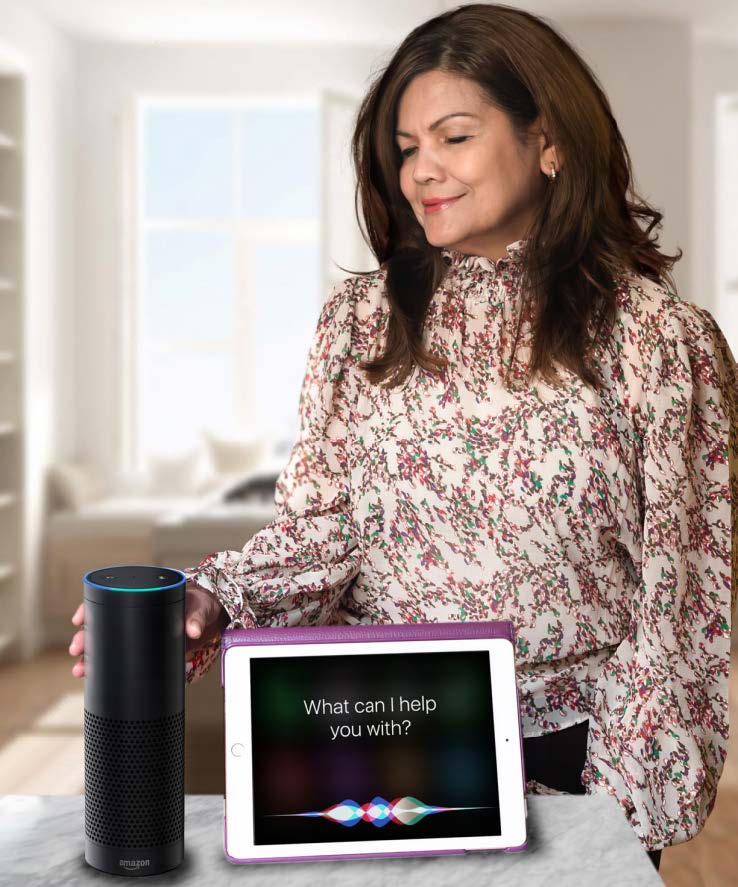
HOUSE LAYOUT
First, allow me to describe some issues I have in getting around. I have orientation problems so bad that I can get disoriented in a tiny shed. Sometimes, my husband wonders if I have memory loss on top of my visual impairment. I also cannot walk a straight track even when using a cane. One old school orientation and mobility instructor alleged I might have problems with my "hypothalamus" (a part of the autonomic nervous system) because I tend to walk diagonally. Considering these mobility issues, layout considerations are central in choosing a home.
In an earlier house that my husband, Silver, and I built in the Philippines, I detailed specifications that I needed – multiple entrances, a wrap-around balcony, orthogonal and well-defined living, dining, and foyer areas. All these facilitated my ease of navigation since I don't want to use a cane in my own home. The multiple entrances provided ease of access. The wrap-around balcony was where I could jog or take a brisk walk in times when I felt the treadmill was boring. The symmetrically-shaped rooms served as a safety net in case I lost my memory while navigating.
We don't enjoy the same luxury in our current home – but it's a good-sized, ranch style, high- ceiling structure. There's space between furniture and fixtures enough for me to be able to dash out from the bedroom to the kitchen if I need to, like when I hear the oven beeping when it's done baking.
There are some rules I've laid out regarding the furniture. Rule Number 1: "Visually-impaired family members should be notified before furniture is rearranged." Then there's Rule Number 2, which is "Don't break rule number 1." Oh, and I'd be remiss if I didn't mention that overhangs are banned! I don't care how pretty they look – overhangs are a death threat to visually-impaired persons, especially to me, because I walk recklessly fast.
CLEANING
A house simply laid out is easy to clean. First, I run the vacuum cleaner over the whole floor area. I need to make sure I cover the entire floor surface. Spot-cleaning got me in trouble so many times since I could never guess which spot was dirty, so I dropped this option. After vacuuming, I apply a wood floor polishing solution over the whole surface. I spray the solution on a microfiber rag, get down on all fours and wipe down the floor with the solution, using my hands to manipulate the cloth. I have the option to use a mop, but my method, though much more laborious, assures me that I don't miss a spot. In the absence of sight, I use my hands to scan the floor. I practice the "Z pattern" of wiping, a method I have learned over time. It's wiping across a linear area from left to right and moving down the next line from right to left, and so on. I use this same method in wiping down counters, bathtubs, and other surfaces in the house. Recently, I acquired Roomba, my robot vacuum cleaner and best friend that I can simply program to clean my home.
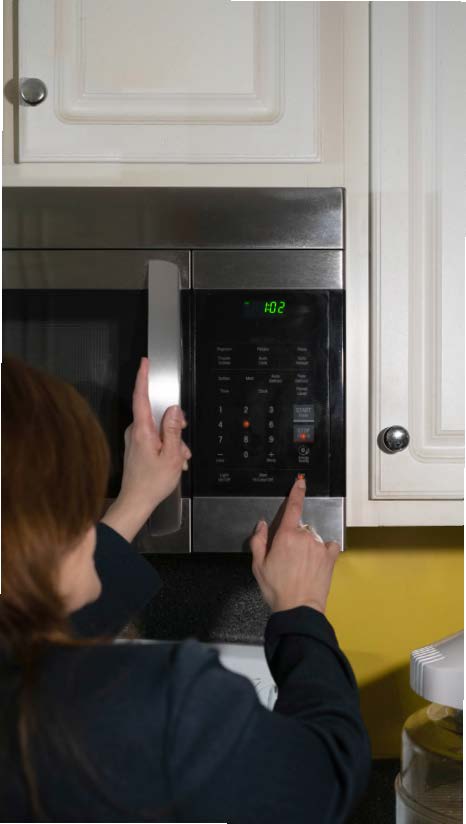
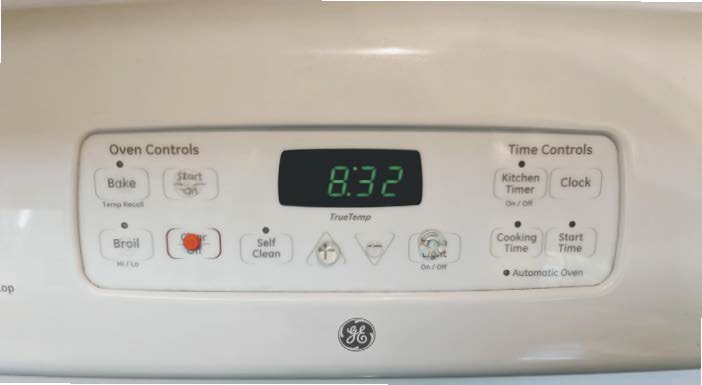
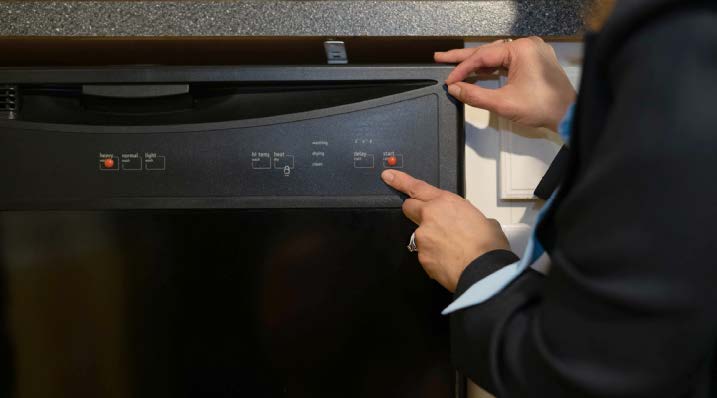
ON THE DOT: The kitchen could well be a battleground, but a person with visual impairment need not hastily raise a white flag in defeat. They can win the battle by making the kitchen accessible and systematically organized. I have bump dots on the microwave oven, the dishwasher, the oven toaster, and the dryer.
A "SMART" HOME
Most electronics have earned the label "smart" for saving people time, labor, and brain-use, sometimes to the point of encouraging laziness. But for people with special needs, smart devices are the breakthrough that empowers them to be productive and independent. Currently, adaptive technology in the homes for blind and visually-impaired persons include those that are controlled by voice, or through smartphones with accessibility features, i.e., voiceover or magnification. Take lights, for example. People like me who are blind do not need lights. But since I've given up all hope of training my sight ed and partially-sighted family members to function in the dark, we set up proper lighting in our house. Lights do not affect me in any way except for times when I'm the last to go to bed, or when alone in the house and, like any responsible homeown er, need to close down the house, lock all doors, turn on the security systems, and switch off all the lights and most appliances. If every light in our house were controlled by only one switch, turning them on or off should not be a problem. However, most of our lights have multiple switches, and I can never tell if they're off by flicking the switches up or down. Thanks to my "Alexa", smart lightbulbs, and all connected devices, this problem is solved. Alexa is a digital assistant who can control smart devices by means of voice commands, or through the phone. Alexa can, among other things, control the security system, the TV and lights, adjust the house temperature, do online shopping, even play music as you tell it to.
THE KITCHEN
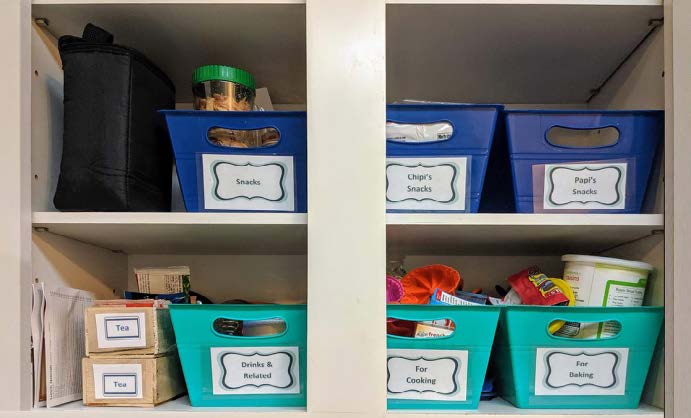
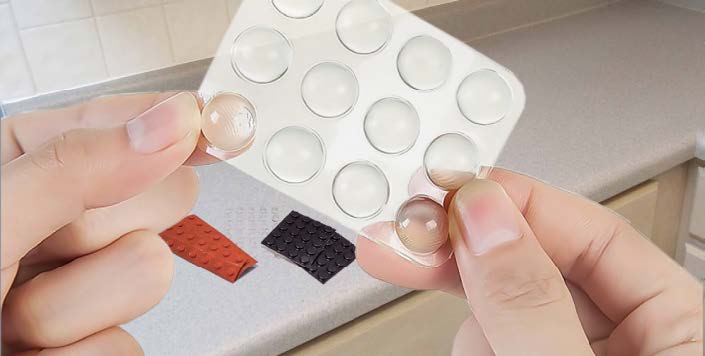
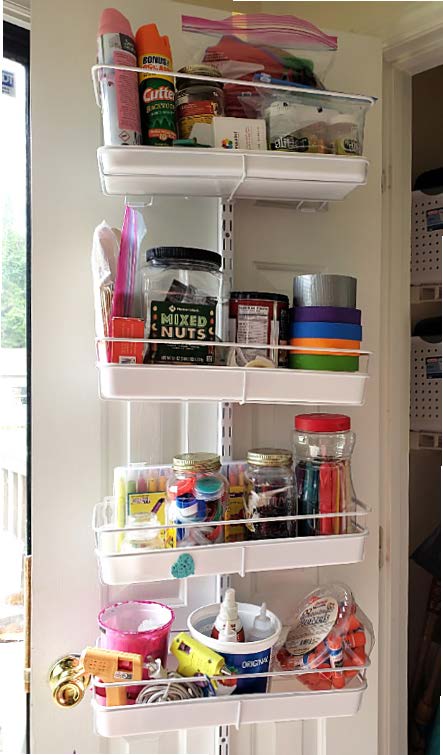
ALL SYSTEMS GO: Contrary to popular misperceptions, people with special needs can be efficient homemakers if they set up their homes to be accessible and orderly according to their requirements; Bump dots are the cheapest and best aids that can turn kitchen appliances blind-friendly
For a visually-impaired person, the kitchen could well be a battleground with fire-breathing stoves, sword-like knives, breakable porcelain traps, and slippery floors. But wait, a person with visual impairment need not hastily raise a white flag in defeat. One can win the battle by making the kitchen accessible and systematically organized.
Consider the stove, which has been modernized from having steel burners with elevated spokes where pots and pans could be precisely landed, to today's flat, conductive stove tops where cookware are set within white circles undistinguishable to persons with visual impairment. I initially thought this was a poor innovation that could end any visually-impaired person's cooking dreams – until I figured out a workaround. One only has to remember the sizes of the white circle drawings that match the diameter of the cookware, and the corresponding knobs that control each burner. Set the pan or pot on the similar circle, turn on the knob for that particular burner, and hover your hand over the area to feel from the heat emitted if the cookware is centered. Move the cookware to the middle accordingly. Then one can cook as usual.
People who are blind like me can prepare cooking ingredients "with our eyes closed." When cutting, however, we need to be careful and attentive to what we're chopping or mixing into the pot. Ingredients, condiments, and seasonings that come in similar containers are labeled for identification.
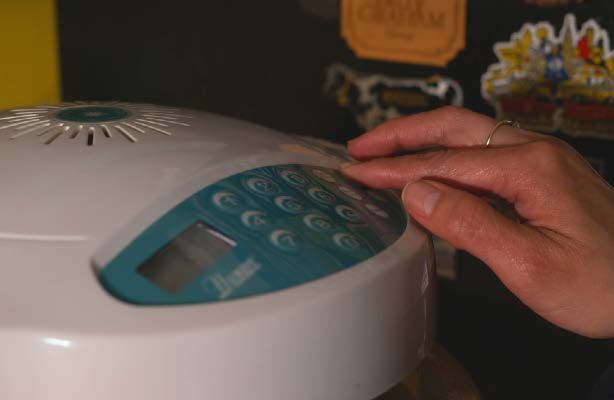
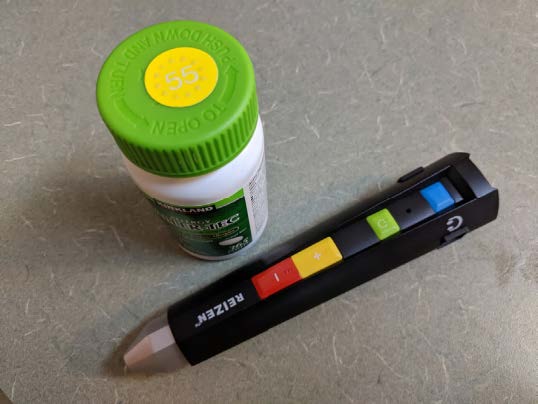
SMART IS AS SMART DOES: For people with special needs, smart devices are the breakthrough that empowers them to be productive and independent. The Reizen Talking Label Wand is a battery-operated, voice-output labeling system designed to help individuals have low vision identify household items, such as cans and jars, medicine bottles, toiletries and more.
I also utilize digital cookware that can be programmed by pressing buttons that beep, such as electric roasters, skillets and pots, as well as infrared ovens. These are usually high-end products and, thus, also come at a high price – but they are a good investment for persons with special needs and their families who love to eat. Bump dots are the cheapest and best aids that can turn kitchen appliances blind-friendly. I have them on the microwave oven, the dishwasher, the oven toaster, and the dryer. The digital surface of our microwave oven is pimpled with bump dots. I have labeled the number 5 (which is usually the center of most keypads), and the cancel button to reset time – and lastly, the 30-seconds button, which I often use. On the dishwasher, the start and stop buttons are marked with bump dots. On the oven toaster, I tagged the "toast" button and the 250-degrees time, which is midway of the heat meter. The clothes dryer has one knob that I've accentuated with bump dots, and that is the timer. One marker sits on the timer pointer. Two bump dots are fixed on the 0 and the 70-minute indicators, so I can set the time needed for drying the clothes. The other knobs click as you turn them, and all the visually-impaired person has to do is count the clicks to set the machine accordingly.
Our washing machine also is blindfriendly. The buttons are tactile and they beep with every push. If a person like me with memory loss manages to remember these buttons, usage should come easily to anyone. Just don't forget that you have clothes sitting in the machine.
HEALTH AND GROOMING
People with visual limitations are usually less mobile than their sighted peers, so there needs to be a conscious effort to stay active for health and wellness maintenance. I am able to watch my weight, or, better yet, listen to it with a talking weighing scale. (Unfortunately, I end up harming this device whenever it announces my weight within other people's hearing range.) Exercising per se is annoying, but I feel exhilarated running on the treadmill since it allows me to listen to my audiobooks. My digital treadmill is well decorated with bump dots that indicate the speed, incline, and program levels. For measuring my blood pressure, I use a talking sphygmomanometer.
Ever since my husband caught me using his body wash for my hair, I've marked my toiletries with waterproof materials like rubber bands of different sizes to differentiate bottles. I don't rely on my husband to pick my clothes since I don't want to look like a cloistered nun, so I set up my closet according to my fancy. Occasionally, I end up wearing uncoordinated clothes, or shoes of different colors; nevertheless, I feel I can rock my brand of fashion just by looking confident.
Recently, my husband attempted to do his laundry and he announced that we were out of fabric softener. I told him we weren't, then directed him to move his hand to the sixth container to the right, and guess what? He found it – concrete proof that systematic organization of one's home aids can greatly help one deal with visual limitations (as well as memory loss).•
MONEY MATTERS
Lessons from a Visually-Impaired Person's Wallet
The orderly arrangement of the contents of a visuallyimpaired person's wallet is a perfect illustration of adaptive organization. The same principles are useful in identifying household items of numerous assortments.
My wallet is purple with an ID holder on the front side. It zips open into 12 partitions. The first section inside, closest to the front of the wallet is where I store other identification cards such as my passport card and minister's license. Next to this section are my credit cards, arranged from the most frequently-used to the least, each card tucked into a separate division.
I carry cash of different denominations. I identify each bill with a money reader app. I fold bills of the same denomination together, e.g., all the $1 bills are folded once, $5 bills twice etc. The idea behind this is bills of every denomination are folded differently, or are dog-eared for easy recognition. This system is efficient for me, although it may not be for other people. A visually- impaired person may use whatever she thinks works best.

Creativity in devising methods for identifying an item out of an assortment adds leverage. For example, in the kitchen, we have several packets of food flavorings, all of the same size. The KNFB reader (an app for reading documents which converts text to speech) helps me identify flavors. I group together packets of similar flavors and put distinguishing marks on them, like folding the top side of the sachet.
EP Magazine's July 2019 issue cover girl is our monthly columnist Christina Llanes Mabalot. She demonstrates how a person who is visually impaired can make his or her home organized and efficiently-run with her article, "The Efficient Homemaker with Vision Loss." You can view this creative and informative video on EP Magazine's Youtube Channel: youtube.com/watch?v=gh18ZRY2-IQ
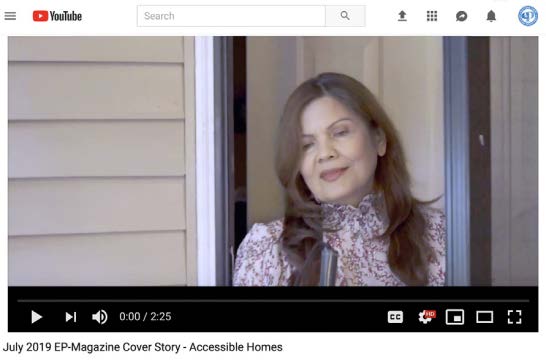
FLASHBACK : EMPOWERING TECHNOLOGY AND "EXTREME MAKEOVER HOME EDITION"
In July 2006, the Llanes family was living like the Jetsons (the family in the Sixties' animated futuristic show). They were a household of six where all but one was born with special needs. My brother, Vic Llanes, the head of the family, and our mother when she was living, were totally blind from a rare congenital condition, aniridia. Two of Vic's children, Guenivir and Carrie, have the same genetic special needs as their father and grandmother.
Meanwhile, Vic's son, Zeb, is profoundly hearing impaired because his mother contracted German measles during pregnancy. Vic's wife, Maria, was fighting thyroid cancer in 2006. Their house was one of the most advanced and high-tech home in the country that year, specially designed to empower the family to live accessibly. The Llanes family was chosen out of thousands of applicants for the "Extreme Makeover Home Edition" reality TV show that provides home improvement for less-fortunate families. The family was consulted by the Extreme Makeover team about their needs, difficulties, and desires as people with special needs. The original house was a 50-year-old, split-level unit furnished with steps in the most unlikely areas, cramped, dark, and with eaves in every side and corner.
Dr. Ronald Siwoff, an internationally-known leader in the lowvision field with over 25 years of practice helping people who have severe visual impairments, was asked to volunteer as a consultant to the Extreme Makeover design team. He explained how people suffering from aniridia have specific visual needs that may be different from those with other types of visual impairment resulting from the absence of irises. The iris, the doctor explained, is the colored part of the eyeball surrounding the lens that is necessary for controlling the amount of light that gets into the eye. Dr. Siwoff inspired the team to build a haven of empowerment that would transform the lives of the Llanes family. He simulated the challenges of people with aniridia for the design team. As a result, extra care was taken to render the special lighting and textures within the home for the visuallyimpaired residents to navigate smoothly. A number of lights were installed for the family members to function maximally, and additional attention was devoted to regulating the glare from the exceedingly bright lights, which can be very painful and may worsen vision for aniridia sufferers. It was touching how Dr. Siwoff brought the experience of transforming the Llanes house to the hearts of the team.
About 3,000 workers, including the production team, were contracted for the Llanes house's extreme makeover. After a week of construction, the Llanes' residence was transformed from a "disabled house" to a "smart" one. Dubbed as the "Z home," the Llanes residence had intelligent devices and gadgets from A-Z. Central to the transformation was the Home Automated Living system (HAL), that enabled the Llanes family to program lighting, heating and security systems via microphones, telephones, the TV, or the web.
Other smart devices included talking thermostats, smoke sensors that give spoken warnings, a Braille printer that was controlled wirelessly by computers throughout the house, a currency reader, a color identifier, a GPS system, and all sorts of Kurzweil products (a company that provides solutions for persons with disabilities) integrated into a computerized home-integration system. To top it all was the specialized communications gear, the system that depicts how technology contributed to connecting the hearts of every Llanes family members. This system converted the visually impaired family members' speech into text and sign languages video clips that Zeb (the sibling with hearing impairment) could see. In reverse, it converted Zeb's typing into speech, which his blind father and visually impaired siblings were able to listen to. This miracle of technology established secure communication between Zeb and the rest of the family, thus preventing a feeling of isolation due to his dissimilar impairment. The Llanes episode was the summer special of that year's Extreme Makeover Home Edition. The production team hired Academy Award-winning actress Marlee Matlin, who is profoundly hearing impaired (and an Oscar winner for Children of a Lesser God) to host this moving episode which attracted a number of viewers and raised funds needed for the production. To learn more about the television show's production and airing, visit: derok.net/randomness/derok/extreme-makeover-home-edition.html ep-magazine.com |

EXTEMELY SMART: The Llanes family, Maria, Vic, Carrie, Isabel and Gwen, gathered outside of their New Jersey home for the reveal of their extensively remodeled home. After a week of construction, the family residence was transformed from a "disabled house" to a "smart" one.